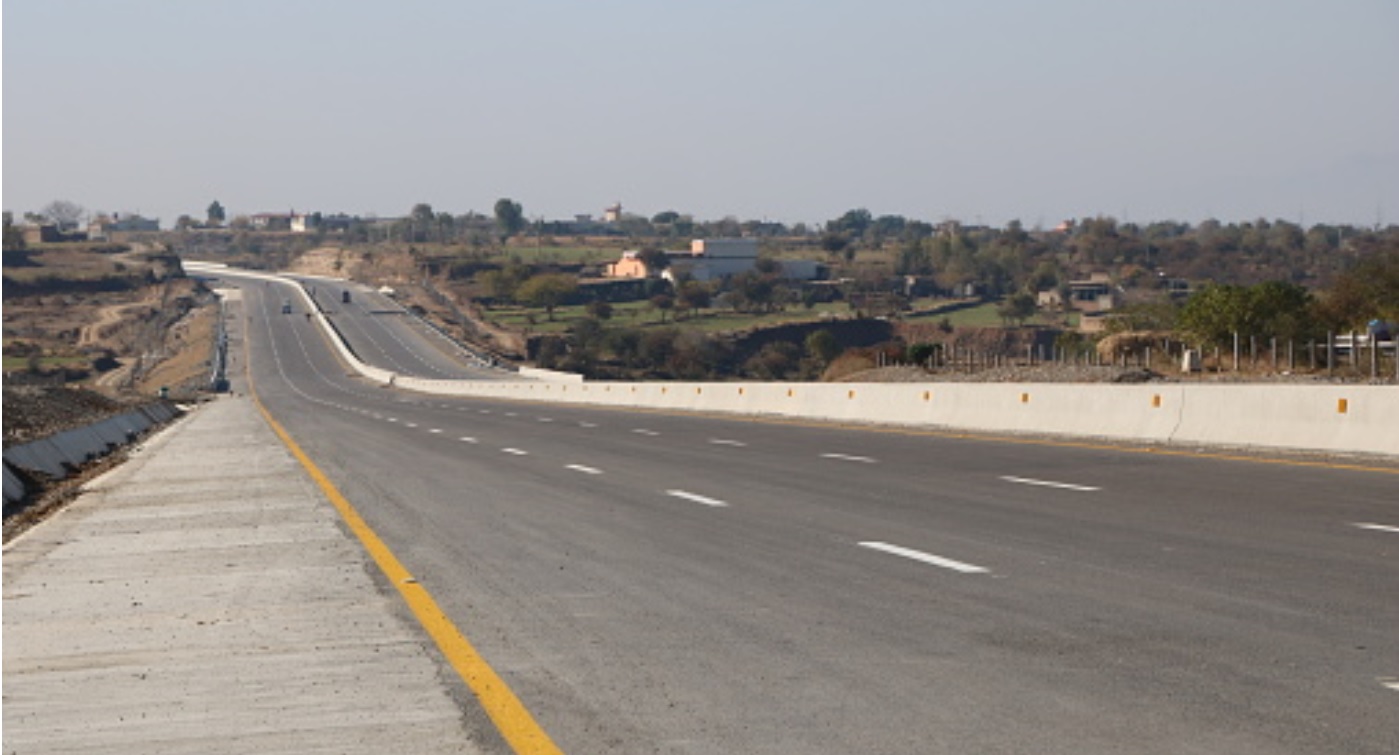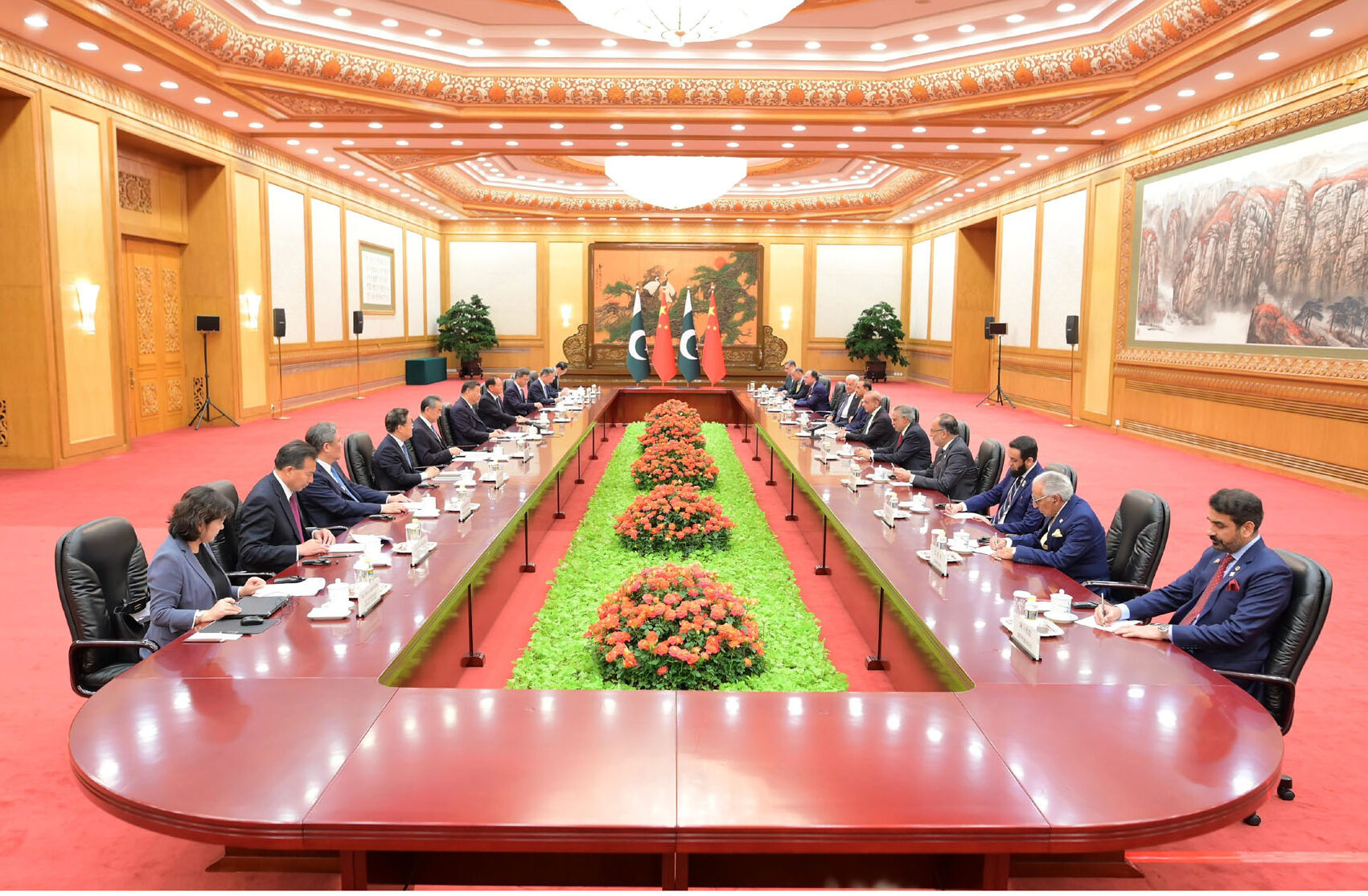
Pakistan’s Prime Minister Shahbaz Sharif has come home nearly empty-handed from his meetings with President Xi Jinping and other top Chinese officials earlier this month. China did not commit to investments for big-tag projects in Pakistan with a clear timeline. The only public outcomes of the meeting were a few memorandums of understanding (MOUs) signed between the two sides and typical Chinese assurances. There are different perspectives on the visit, but it has certainly not lived up to Pakistan’s expectations that China would assist in this moment of economic crisis. This cold response arguably points toward waning Chinese enthusiasm for the China-Pakistan Economic Corridor (CPEC), a growing trend in recent years. Delayed payments, political volatility, and security woes in Pakistan seem to have caused Chinese leadership to believe that their all-weather friend needs a significant policy overhaul to qualify for the next phase of investments. Therefore, without a dramatic overhaul, Islamabad should keep its expectations from Beijing low.
A Not-So-Inspiring Working Relationship
Beijing’s experience with Islamabad on CPEC, which was inaugurated in 2013, has not encouraged confidence in future Chinese infrastructure investments in the country. CPEC – publicized as the Belt and Road Initiative’s (BRI) flagship project – has suffered unanticipated delays since the beginning. The first phase of CPEC finished in record time because, as in most cases with BRI projects, Chinese companies spearheaded the construction process. But the so-called second phase began to slow down in 2019, as the Pakistani side could not meet the deadlines. Some big-tag projects remain incomplete despite agreements between the two on expediting the process. Noteworthy among the delayed projects are Chinese-modelled special economic zones (SEZs) in all provinces and the federal capital, as well as the railway line from Karachi to Peshawar (ML-1), which China declared a strategic project in 2017.
The delays on the part of Pakistan were due to a combination of poor economic decision-making and environmental factors. A series of calamities in Pakistan postponed the already-dubious payment arrangements. The country experienced a severe balance-of-payment crisis from 2017 to 2023; the COVID-19 pandemic negatively affected the economy and stalled CPEC projects; and Pakistan suffered from one of the worst floods in recent history in 2022. The country’s leadership had already over-promised, so payments to Chinese power producers (IPPs) suffered. In the last three years, Chinese IPPs frequently lodged complaints over delayed payments.
Political Volatility at Home
The second prominent issue influencing Beijing’s cold response to Islamabad’s appeals is the political volatility in Pakistan. Since the CPEC project began, the Chinese officials and business community have dealt with four governments in Pakistan – all mired in protests, agitation, and uncertainty. Protests against the government postponed Chinese President Xi Jinping’s visit to Pakistan in 2014 and crippled Islamabad for four months. Chinese leadership has also witnessed the multiple allegations of corruption involving the infrastructure projects, political infighting for provincial influence, elite friction, and public dispute around Pakistan’s own misgivings over CPEC, including concern that economic benefits are not accruing for Pakistanis.
This political instability and infighting compounds upon the bureaucratic confusion and incompetency that has stalled progress on China’s infrastructure investments. The previous Pakistan Muslim League-Nawaz (PML-N) government thrice changed the agencies responsible for executing CPEC projects. The responsibility shifted from the Prime Minister’s Secretariat, to the Planning Ministry, to ultimately rest in the Board of Investment (BOI). In the Pakistan Tehreek-e-Insaf (PTI) years, it shifted back to the Planning Ministry, and eventually found a home in the newly created CPEC Authority led by a retired three-star general. Each rotation brought in new faces, new policies, and new working styles. But the changes had no positive effect on CPEC’s progress. Promises remained unfulfilled and expressions – such as “one-window operation,” suggesting there would be one place where stakeholders would go to submit all the necessary documents, and “revolving accounts” for automatic payments to the Chinese investors – remained expressions. Repayment arrangements are still weak and, at times, compel the prime minister’s office to intervene.

Security Woes Exacerbate Chinese Fears
The other element, which poses potentially the greatest risk to Chinese investors, remains Pakistan’s volatile security environment and increasing militant attacks targeting Chinese workers. Terrorist attacks in Pakistan surged by 73 percent, and the total number of casualties increased by 138 percent, between the Taliban takeover of Afghanistan in August 2021 and June 2023. The two provinces of Khyber Pakhtunkhwa (KP) and Balochistan – the former, an artery connecting China and Pakistan, and the latter, home to the crown jewel of CPEC, the Gwadar Port – witnessed a surge in attacks by 92 percent and 81 percent in the last 22 months.
Chinese leadership is concerned for the well-being of Chinese citizens working in Pakistan, and rightfully so. One study shows eight incidents of terrorism targeting Chinese nationals in Pakistan from 2004 to 2010, whereas from 2011 onwards, the number of incidents targeting Chinese nationals surged to 25. The intensity and geographic spread of these attacks have also increased. The surge occurred even after Pakistan established two special security divisions and a naval task force to protect CPEC and Chinese workers in Pakistan. On top of other recent attacks, the March 24 attack that killed five Chinese workers in the Shangla district of KP led the president, prime minister, and army chief to individually assure Chinese officials of the safety and security of their citizens. The recent China-Pakistan joint statement, issued by Pakistan’s Foreign Office, also emphasizes this point.
Publicly, China has indicated that it wants to expand CPEC to Afghanistan and Iran, but this is complicated by Pakistan’s fractious relationship with all of its neighbors except China. In 2024, Pakistan exchanged fire with both Afghanistan and Iran; tensions with the Taliban regime in Afghanistan remain particularly high.
This trend is bound to worry Chinese investors. The dividends from Chinese investment in building CPEC will remain meager as long as Pakistan’s relations with its neighbors are poor, since such border tensions negatively affect trade and barricade potential connectivity projects. Another likely concern of Chinese leadership is that without the Taliban’s support to rein in the threat of Tehreek-e-Taliban Pakistan (TTP) and Islamic State-Khorasan Province (ISKP), Chinese personnel and projects in Pakistan will face a growing threat of terrorism. Despite China’s effort to improve relations between Afghanistan and Pakistan in 2023, little has improved so far.
Can Pakistan Save CPEC?
While PM Sharif’s visit to China amid difficult circumstances shows his commitment to the project, the limitations of what Pakistan can expect from its relationship with China are also evident. The statements and policy decisions of the PM’s Secretariat show that Pakistani leadership realizes these challenges. After all, over the past six months, the message from Beijing has been that nothing changes without streamlining business activity, political stability, and adequate security measures.
Islamabad has tried to show that it is working to improve all three aspects to convey to Beijing that CPEC is a priority. On the economic front, the Pakistani government issued billions of rupees to Chinese energy companies before the PM embarked on his visit to China. On June 21, the Chinese government signaled to the coalition government that it could work with other political stakeholders for the sake of CPEC by convening the third round of the joint consultative mechanism, a forum for dialogue between the Communist Party of China (CPC) and the political parties of Pakistan. Representatives from all major political parties participated in this meeting, where they reaffirmed their commitment to China-Pakistan bilateral cooperation and CPEC. On the security front, Pakistan’s Apex Committee – comprising civilian and military leadership – decided to launch a nationwide counterterrorism operation “Azm-e-Istehkam” (Resolve for Stability) on June 22. Unsurprisingly, Pakistan announced this initiative after the PM’s visit to China and a CPC member’s visit to Pakistan.
Islamabad is doing everything right with its messaging to Beijing. But Pakistan’s civilian and military leadership have to implement policy overhauls that look at the long-term goal. Pakistan already has an unimpressive history of unfinished or perennially delayed projects and initiatives. Without a charter of economy with the support of all mainstream political actors, zero-tolerance for militancy and extremism, normalcy in relations with neighboring states – including India – that ensures peace at its borders and helps Islamabad redirect its finite resources to constructive sectors, and the political stability needed for long-term planning and commitments, nothing substantial is likely to come from Beijing in the coming years. Until then, China-Pakistan economic relations will depend on what is best described as “make-shift arrangements.”
source : southasianvoices
